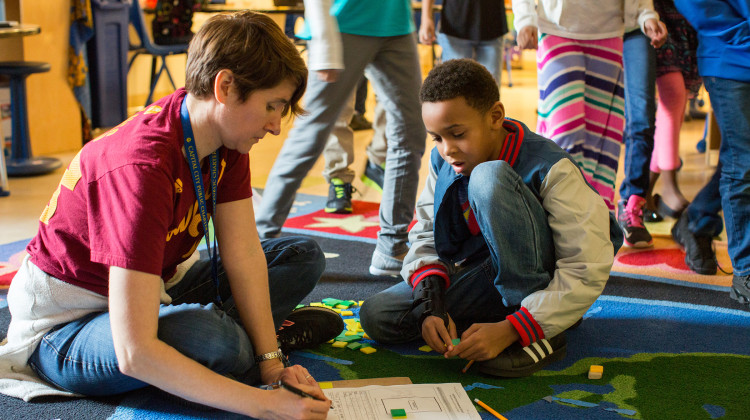The government released the latest national test scores on Wednesday, and the news isn't good: 12th-graders are headed toward graduation, but many don't have the skills they need to succeed in college or work.
The test is the National Assessment of Educational Progress, often referred to as "the nation's report card."
It measured reading and math skills of 92,000 high school seniors in 2013 and found that reading skills of those 12th-graders have gone unchanged since the last time the test was given, in 2009, and they're lower than those of students in 1992.
Things aren't much better when it comes to math. While scores were slightly better than in 2005, they too have been stagnant since 2009.
Those results are unacceptable, said David Driscoll, chairman of the National Assessment Governing Board, which oversees testing policy.
"Achievement at this very critical point in a student's life must be improved to ensure success after high school," he said.
Education Secretary Arne Duncan called the news troubling, particularly as high school graduation rates have reached an all-time high.
"We must reject educational stagnation in our high schools, and as a nation, we must do better for all students, especially for African-American and Latino students," he said.
In the NAEP test, achievement is broken down into three levels: basic, proficient and advanced. "Basic" indicates partial mastery of the subject, "proficient" is grade-level performance, and "advanced" indicates superior work.
Seventy-four percent of students scored below the grade-appropriate level in math, compared with 26 percent of students who scored at or above grade level. Asian students and students whose parents went to college achieved the best math scores. Math scores for African-American students were the worst.
In reading, just 38 percent of seniors scored at or above grade level. And one-quarter of high school seniors are reading below grade level.
But that flat performance wasn't just among students who struggled with math and reading, officials said. It also extended to the highest-performing students.
The results released Wednesday also showed that the achievement gap between white students and their black and Hispanic counterparts remained stubbornly wide, despite more than a decade of federal efforts to close it.
Average math scores for black students have gone up since 2005, but the black-white gap in math has not narrowed. It remains a 30-point divide. Reading scores for black students did not improve at all. That gap widened by five points.
In discussing the persistent divide, officials noted a shift in demographics.
For example, in 1992, Hispanics made up just 12 percent of the 12th-grade population. That population has tripled since then, to 20 percent in 2013. Likewise, white students made up 74 percent of 12th-graders in 1992. They now make up just 58 percent of high school seniors. The population of black students has remained constant at 15 percent.
But the researchers emphasized that they weren't looking to "explain away" the test scores.
Even so, "it is also useful to keep in mind that we are seeing increases in some subgroups that have traditionally performed lower than other subgroups," said John Easton, the acting commissioner for the National Center for Education Statistics.
"I think it increases the challenge on us, especially educators, to reach out to these student groups and make sure they're getting attention due," he said.
9(MDEwMDc1MzM3MDEzNDczOTA0MDc1MzViMQ001))
 DONATE
DONATE







 View More Programs
View More Programs

 Support WFYI. We can't do it without you.
Support WFYI. We can't do it without you.